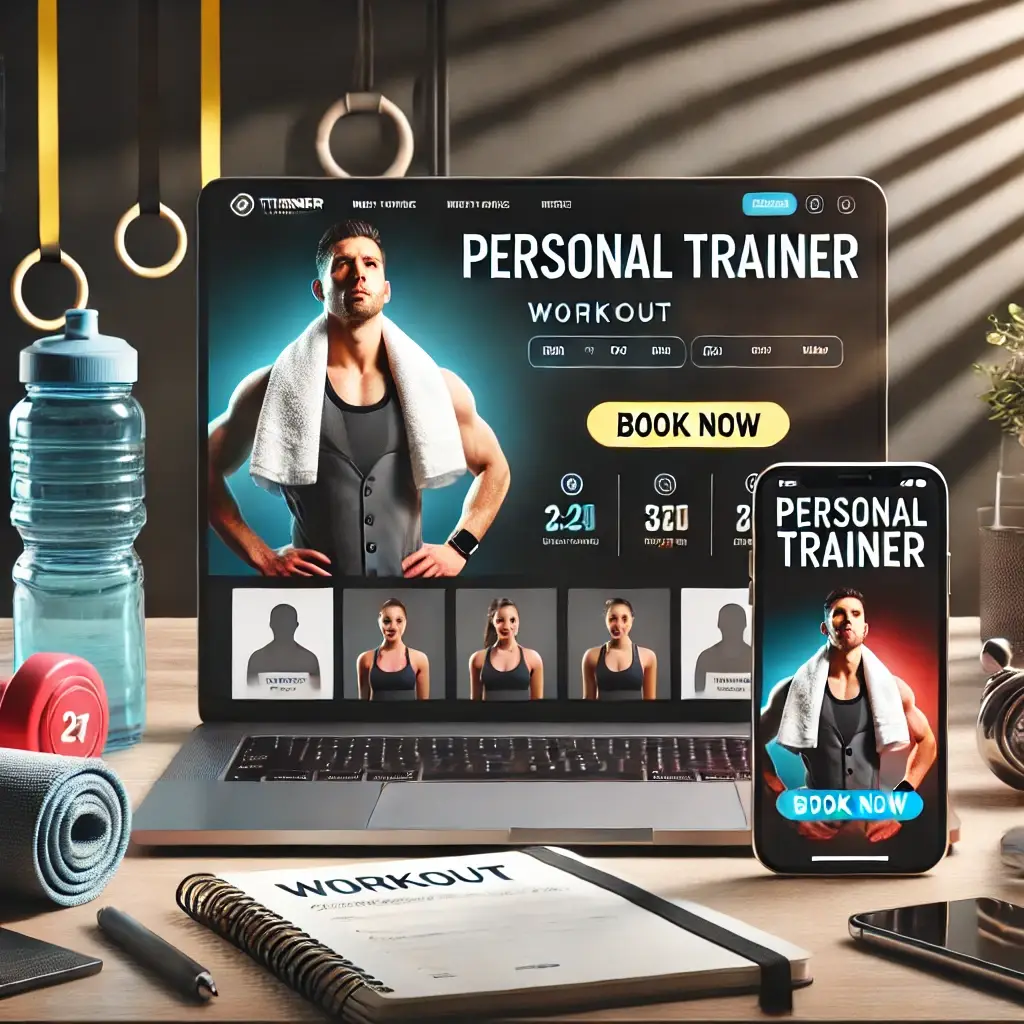Key Takeaways
- Know Your Audience: Tailor your website’s design and content to resonate with your target audience, such as beginners, athletes, or busy professionals. Use inclusive, encouraging language.
- Highlight Your Unique Value Proposition (UVP): Clearly communicate what sets you apart, such as expertise, personalized services, or flexibility, with a bold tagline or an introductory video on your homepage.
- Use High-Quality Visuals: Include professional, authentic photos of yourself, your services, and client results to build trust. Avoid generic stock photos.
- Simplify Navigation: Organize your site into clear sections like “About Me,” “Services,” “Testimonials,” and “Contact.” Use a sticky navigation bar for easy access while scrolling.
- Optimize for Mobile: Ensure your website is mobile-friendly, with seamless navigation and readable text on smaller screens. Use tools like Google’s Mobile-Friendly Test.
- Leverage SEO: Use relevant keywords in headings, content, meta descriptions, and alt tags. Create internal links to improve visibility and drive traffic.
- Showcase Social Proof: Include testimonials, client success stories, and before-and-after photos to demonstrate your effectiveness. Use video testimonials for a more personal connection.
- Add Online Booking and Payments: Integrate tools like Acuity Scheduling, PayPal, or Stripe to streamline booking and payment processes for clients.
- Maintain a Blog: Regularly update your site with blog posts on fitness and nutrition topics to drive traffic and boost SEO.
- Incorporate Clear CTAs: Use direct calls-to-action like “Book a Free Consultation” or “Sign Up for a Class” prominently across your website to guide visitors toward taking action.
Understanding Your Audience
The foundation of a great website starts with understanding your target audience. Are your clients beginners looking to get in shape, athletes aiming to improve performance, or busy professionals needing flexible fitness solutions? Tailoring your website’s design and content to their needs ensures you capture their attention.
Pro Tip: Use inclusive and encouraging language that resonates with your target audience.
Highlight Your Unique Value Proposition
What makes you different from other trainers? Your website should immediately communicate your unique value proposition (UVP). Whether it’s your expertise in strength training, personalized nutrition plans, or flexible online sessions, make your UVP clear on your homepage.
Consider adding a bold tagline or a short introductory video to make your UVP stand out.
Include High-Quality Visuals
In the fitness industry, visuals are key. Use professional photos that showcase your services, facilities, and results. High-quality images of you working with clients or demonstrating exercises can build trust and credibility.
Pro Tip: Avoid generic stock photos. Authentic visuals resonate better with potential clients.
Make Navigation Simple
A user-friendly website is a must. Organize your website into clear sections such as “About Me,” “Services,” “Testimonials,” and “Contact.” Ensure your navigation bar is easy to find and doesn’t overwhelm visitors with too many options.
Example: Add a sticky navigation bar that stays visible as users scroll through your site.
Optimize for Mobile Devices
Most users will visit your site on their phones, so a mobile-friendly design is non-negotiable. Ensure your website adjusts seamlessly to different screen sizes and that navigation, images, and text are easy to view on smaller devices.
Use tools like Google’s Mobile-Friendly Test to check your site’s performance.
Leverage SEO to Increase Visibility
Search engine optimization (SEO) helps clients find your website. Use relevant keywords like fitness website design ideas and SEO for fitness professionals in your headings, content, and meta descriptions. Don’t forget to optimize image alt tags and create internal links to related content.
Learn More: Check out our business tips for personal trainers for additional SEO strategies.
Add Testimonials and Client Success Stories
Social proof is a powerful tool for converting website visitors into clients. Include testimonials from satisfied clients and showcase before-and-after photos to highlight your effectiveness.
Pro Tip: Use video testimonials for a more personal touch.
Incorporate Online Booking and Payment Options
Make it easy for clients to book sessions or pay for your services directly through your website. Online booking tools and payment gateways like PayPal or Stripe can streamline the process, improving convenience for both you and your clients. While you’re at it, make sure you are pricing your services correctly.
Example: Integrate tools like Acuity Scheduling for seamless bookings.
Regularly Update Your Blog
Adding a blog section to your website can drive traffic and showcase your expertise. Write posts on topics like fitness tips, nutrition advice, or workout routines. Blogging improves your site’s SEO and keeps your content fresh.
Example: Write posts targeting keywords like “best home workouts for busy professionals.”
Focus on Clear Calls-to-Action (CTAs)
Your website should guide visitors toward taking action. Use CTAs like “Book a Free Consultation,” “Sign Up for a Class,” or “Download My Fitness Guide.” Place these prominently on your homepage, service pages, and blog posts.
Here’s a short video that will show you examples of some do’s and don’ts of an effective landing page, incorporate these in your own site.
Where to Go From Here?
Designing an effective personal trainer website doesn’t have to be complicated. By following these tips and focusing on user experience, you can create a platform that attracts clients and grows your business. Ready to take the next step? Check out more business tips for personal trainers to optimize your online presence.
Designing a website that attracts clients starts with a professional, custom-built foundation. Showcase your services, expertise, and success stories with ease. Check out our personal trainer websites today and stand out in the fitness industry!







